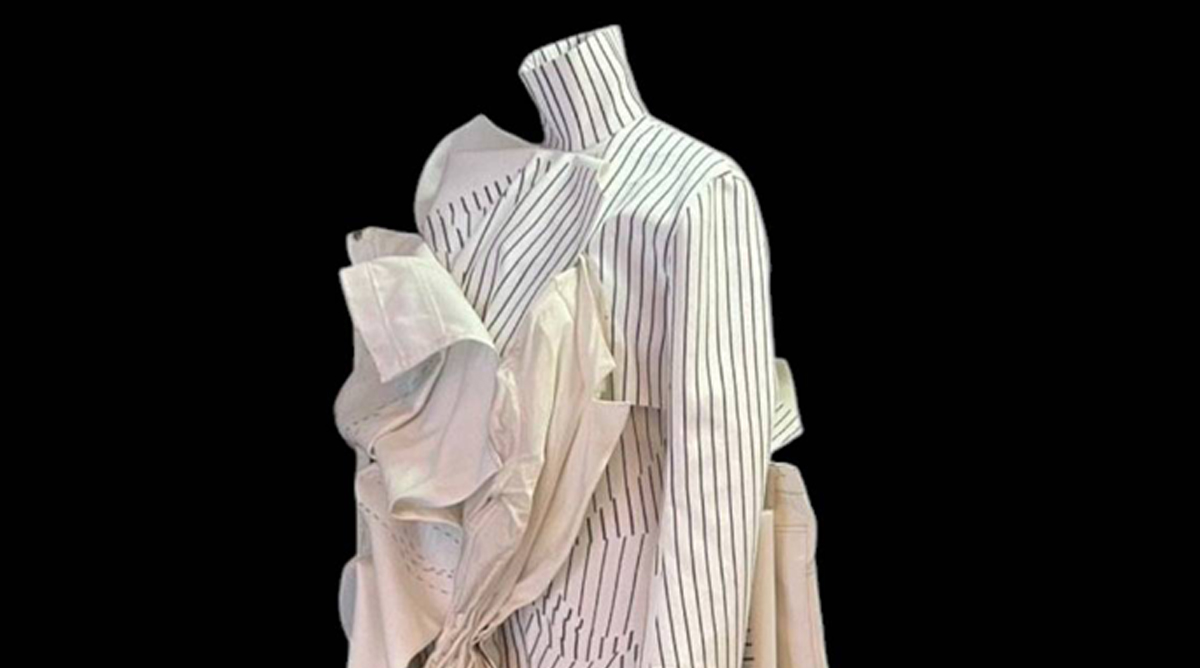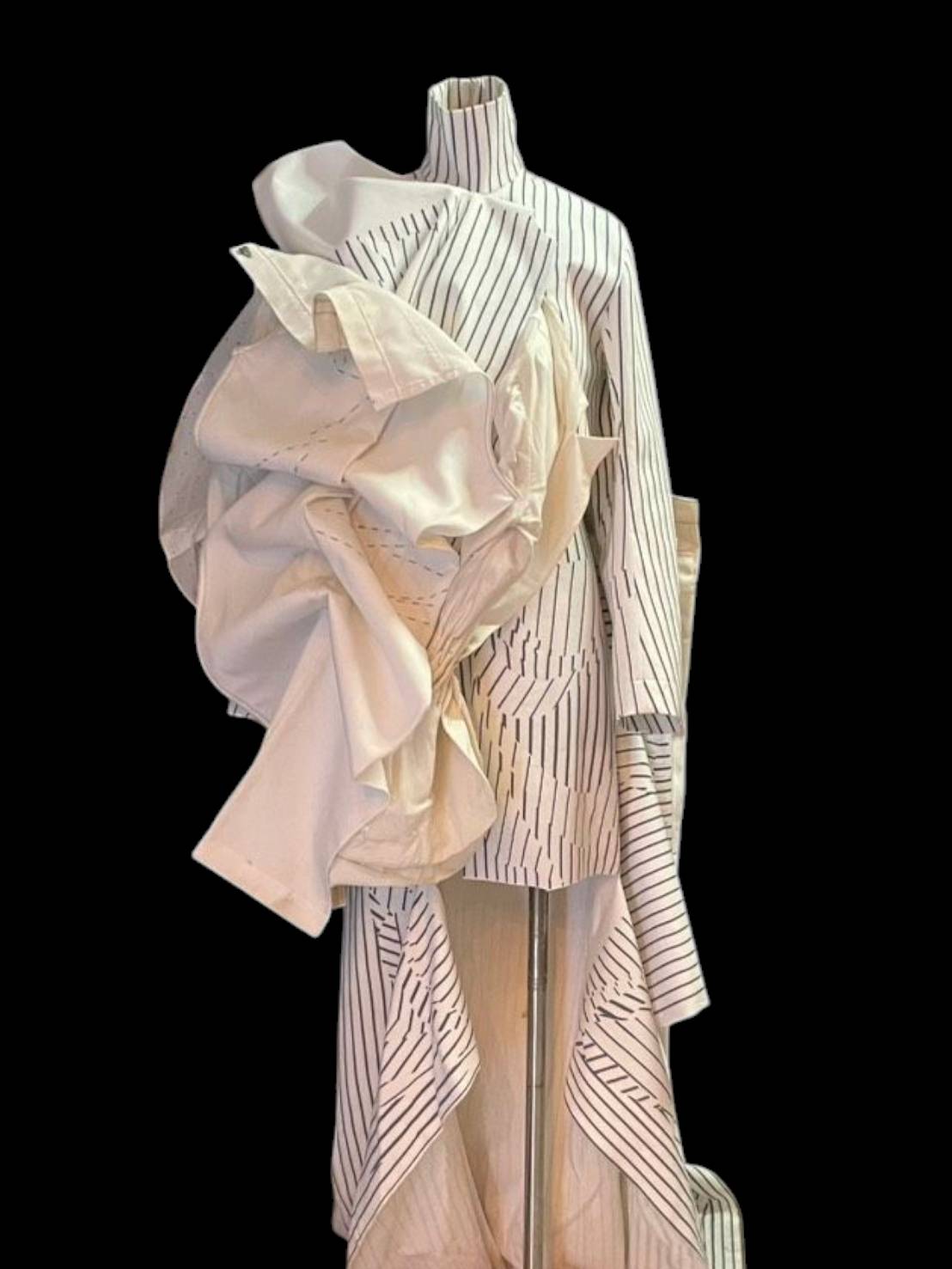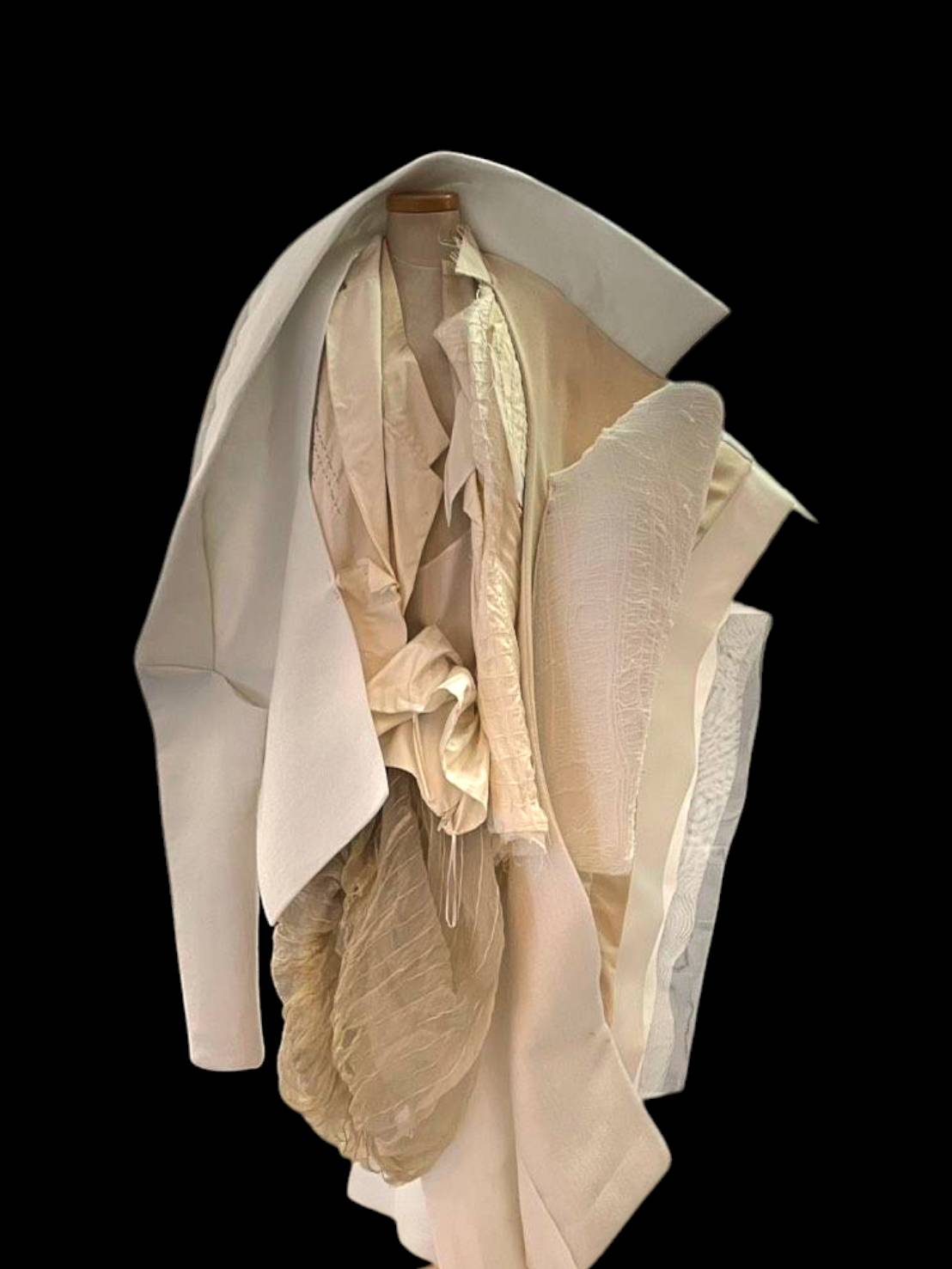
Graigote Saereedeelert


Abstract :
Currently, the issue of fashion waste has become a major problem, particularly in the fast fashion industry, leading to heightened awareness about environmental preservation. As a result, designers have increasingly turned to creating sustainable fashion to prevent further waste and reduce global warming caused by the fashion industry. This design project emerged from deconstructing past clothing collections and reworking them into new pieces based on the original concept of time and movement. It utilizes the philosophy of deconstruction and sustainable fashion principles by transforming unused materials into new creations, contributing to environmental preservation.
The works deconstructed for this project are from an art thesis presented in a fashion show in 2010, consisting of six outfits. The design concept of this past collection focused on interpreting time and movement in the garment design process, using the philosophy of deconstruction to explore the idea of beauty in imperfection. This was inspired by Jacques Derrida’s theory, which examines the various stages of garment production.
In creating this new work, the same original concept was reinterpreted after 15 years. Over time, the process of garment production has evolved, shifting from simple steps to more complex ones, influenced by experience and the demands of the work. As a result, deconstructing and reassembling the old works into something new led to more intricate structures, with larger forms and overlapping patterns built around the concept. This transformation turned the six old pieces into two new creations.
Reworking old garments into new structures follows the principles of sustainable fashion, adding value to clothing and leftover materials. It also raises awareness about the fashion industry’s contribution to global pollution. This project serves as a model for reviving old items, bringing them into a more contemporary context while preserving their history. Additionally, by reassembling multiple garments into a new work, it creates innovative new shapes and forms that differ from the original pieces.
Objectives :
1. Studying the Philosophy of Deconstruction: This is to understand the process of deconstructing the old structure of the original works and transforming them into new creations that align with the concept.
2. Experimentation to Find New Structures for the Work: Since this project requires using existing materials, there are constraints in the design process. As a result, the approach to creativity cannot rely solely on starting from scratch. Studying the philosophy of deconstruction and experimenting with actual garments became the method to explore ways to deconstruct and reconstruct the new structure.
3. Finding Ways to Avoid Creating More Clothing Waste: By using existing materials, the created works serve as a method for developing and enhancing what is already there, ultimately increasing its quality and value without contributing to additional waste.
Conceptual Framework :
Time and movement are the core concepts in this design process. Movement can only occur when time moves forward, leading to actions and activities. The garment production process is particularly interesting as it reflects the stages within that specific time frame for the fashion designer. Fifteen years ago, the perspective on the garment design process was shaped by the experiences of that time. Each step was presented in a straightforward and simple manner. The past works, therefore, represented those moments through the garments themselves, whether it was the design process, pattern making, draping on a mannequin, or the final garments hanging on a rack, ready for sale. However, as time passed, and with the accumulation of experience, the perspective on the design process shifted. Each step became more serious and pressurized. A designer’s knowledge and ability to navigate the demands of each stage of production became crucial. The burden of responsibilities made the concept of time and movement in the design process evolve, expressing the heaviness and overlapping pressures of these demands. This shift led to the transformation of the garment shapes, as the process became more complex and the structure of the new garments reflected the changing dynamics of time. The final result is a garment structure that expresses the emotional weight of time, showing how the passage of time influences the design process and the designer’s perception
Process / Methodology :
The creation of the two new garments began with deconstructing the six old outfits, breaking them down into individual pieces to find a way to reassemble them using the philosophy of deconstruction and the concept of time and movement, especially after 15 years. Each old piece had its own distinct shape and style, including shirts, pants, skirts, dresses, and outerwear. When deconstructing each part, careful consideration had to be given to how it could be reassembled, focusing on the new structure that would emerge, including shapes that were heavier, larger, and more complex, reflecting the accumulated experience over time of the designer. The perception of beauty, once seen in the simplicity of the past, has now shifted to something more intricate and chaotic, much like the process of aging. Therefore, after deconstructing each pattern, the pieces were used to create a new design by draping them on a mannequin, examining each new composition step by step. Throughout the process, the original concept remained the guiding principle, ensuring that the reassembled garment conveyed the intended message of time and movement while incorporating the evolving complexity that had developed over the years.
Techniques and Materials :
The work utilizes techniques from the garment design process as a guideline to create textures that align with the philosophy of deconstruction. The techniques involve creating surfaces that appear imperfect and not aesthetically pleasing according to traditional artistic principles. These include painting the fabric to look smudged, sewing seams that overlap, and printing patterns in a discontinuous manner. Additionally, all materials used are repurposed from the original garments, including leftover materials from fifteen years ago. In reconstructing the new works, some pieces were intentionally thinned out and altered in structure and weight to allow them to be sewn into the desired shapes. This required creating internal structures and stiffening the fabric. Furthermore, the age of the materials, some of which have faded or changed color over time, was not corrected or refreshed. Instead, they were left in their original state, as the beauty in deconstruction, according to its philosophy, does not require conformity to traditional artistic standards of perfection.
Result / Conclusion :
Through the study and hands-on creation of new garments using old clothes, a garment structure was formed with a different perspective from before, resulting in a shape that reflects imperfection, in line with the philosophy of deconstruction. However, the challenge of working with leftover materials comes with limitations, such as the need to use parts deconstructed from the original outfits or old and damaged fabrics in certain areas. This led to some sections of the new structure having moments of continuity that were not perfectly resolved.
Nonetheless, the key achievement of this process was the prevention of generating new waste. All fabrics and materials that had been stored for a long time were completely utilized. This outcome aligns with the goal of creating environmentally sustainable designs, and represents a creative effort that successfully addresses the challenge of eco-conscious design.
References :
–